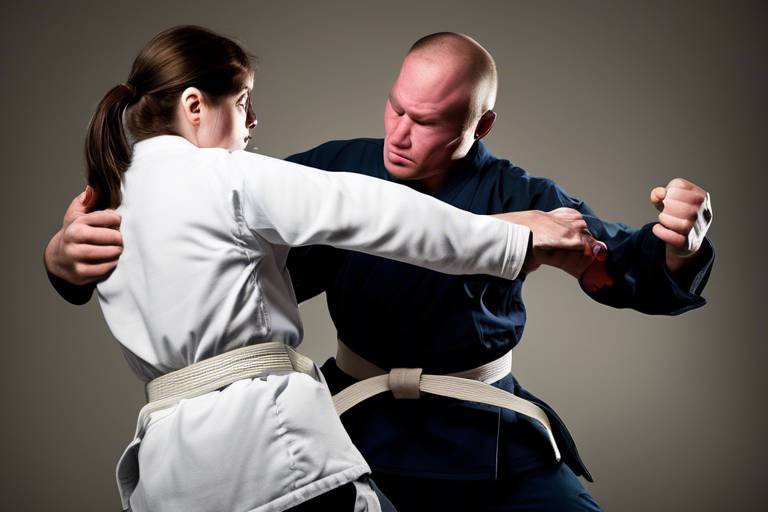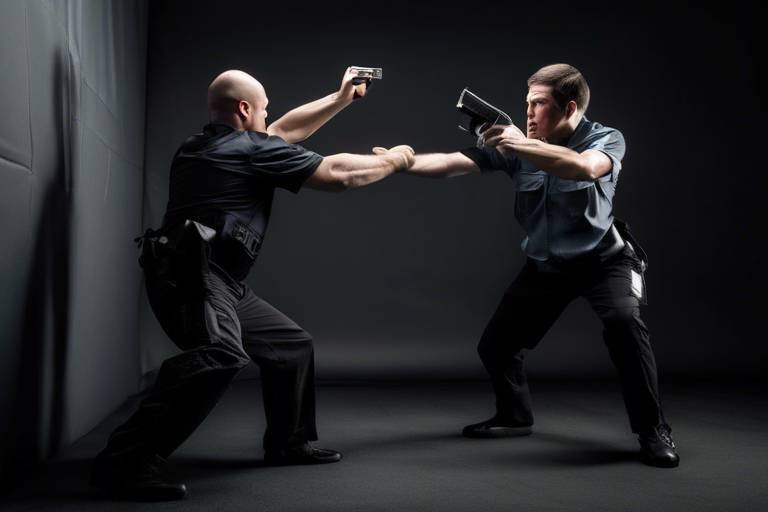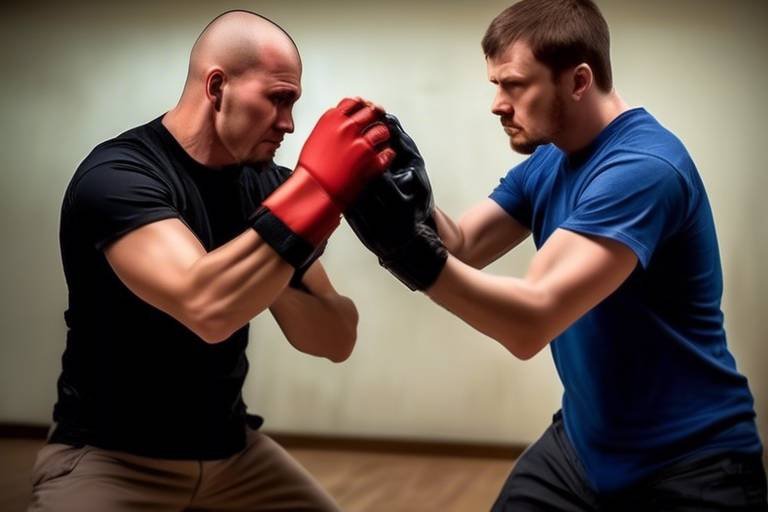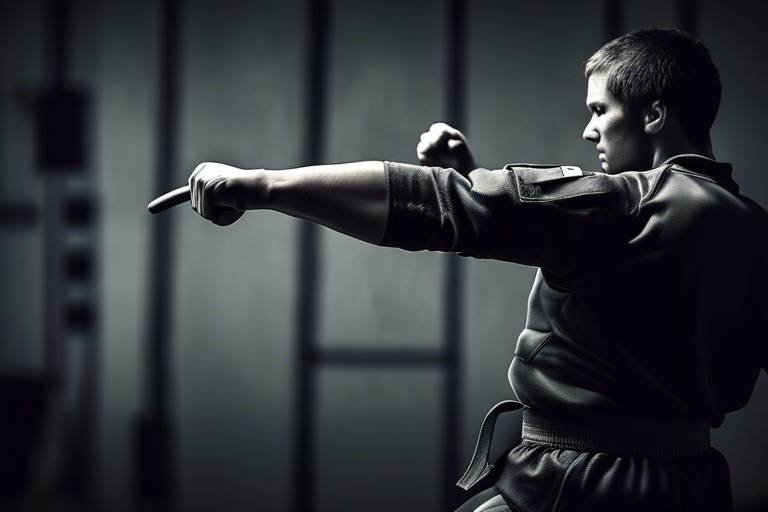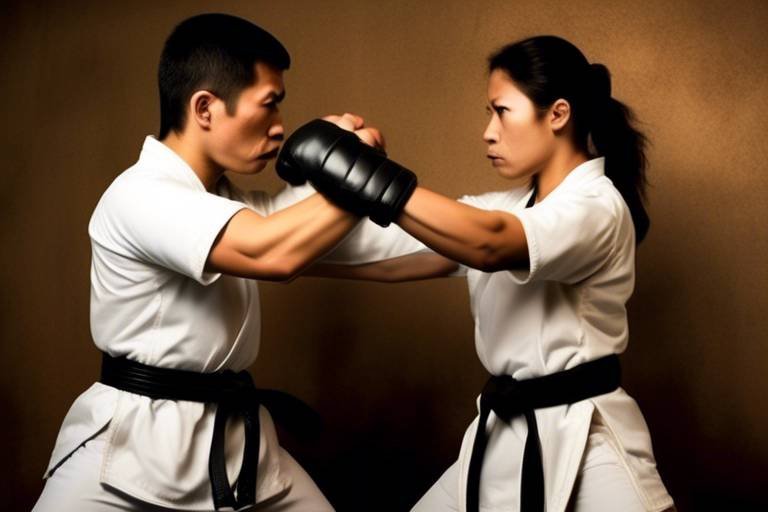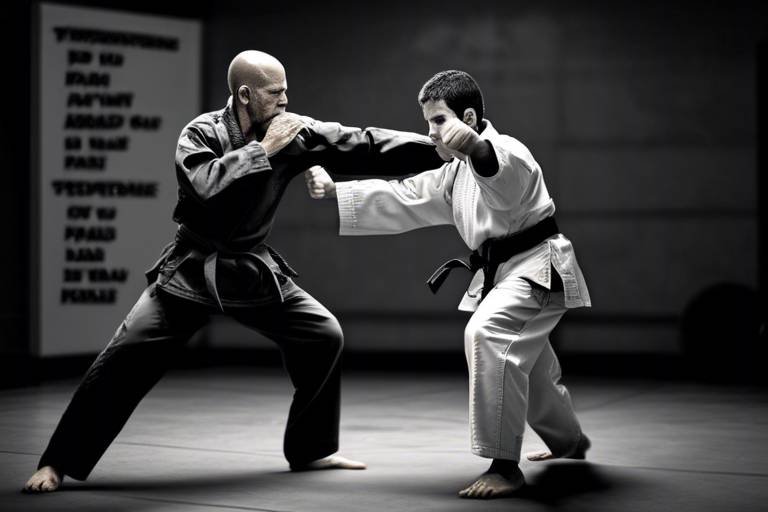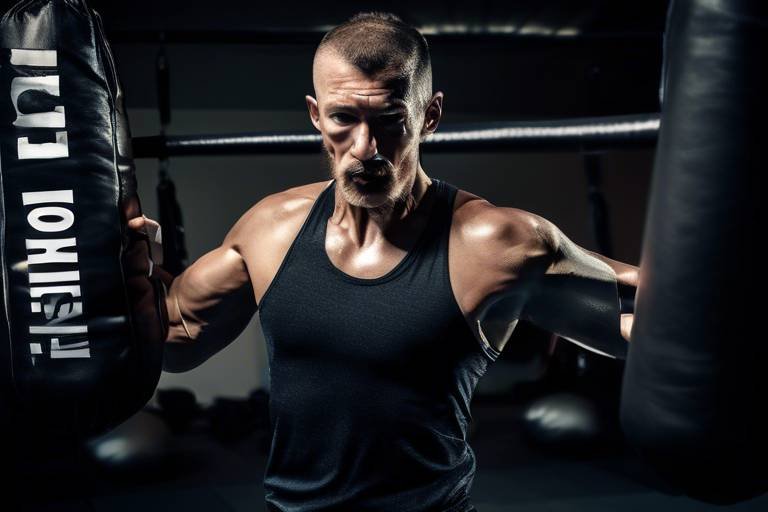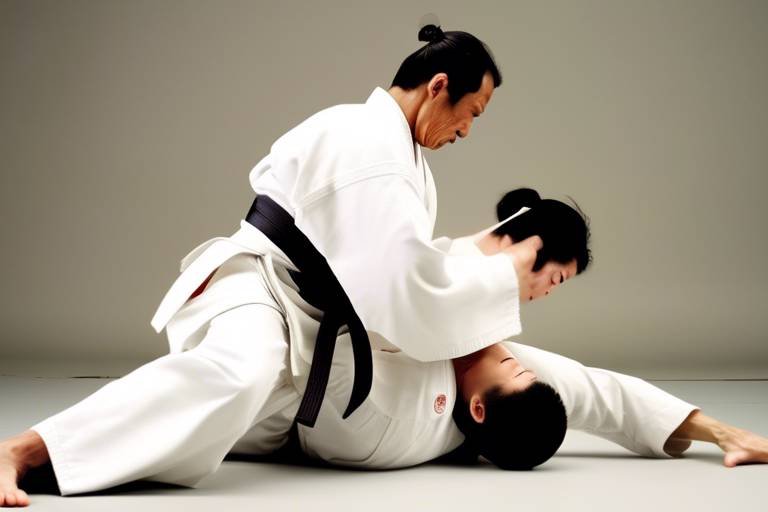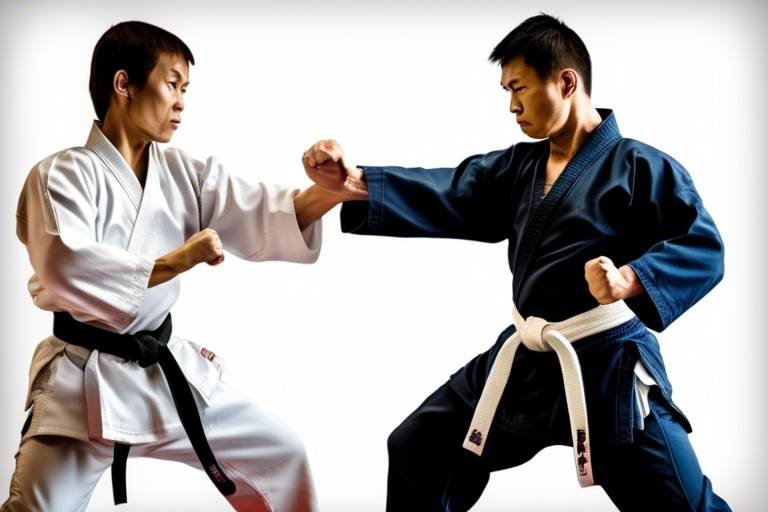Self-Defense Techniques - Do They Depend on the Attacker's Size?
In today’s world, understanding self-defense is not just a skill; it’s a necessity. As we navigate through life, the potential for encountering threatening situations lurks around every corner. But here’s the burning question: does the size of an attacker truly dictate the effectiveness of self-defense techniques? The answer is a resounding no, but with some caveats. While size can influence the dynamics of a confrontation, it's not the sole determinant of success in self-defense. Instead, factors like strategy, skill, and awareness play pivotal roles in ensuring personal safety.
When we think about self-defense, it’s easy to imagine a large person overpowering a smaller individual. However, this perception can be misleading. Self-defense isn't merely about physical strength; it's about using your brain and body in harmony. Picture this: a skilled martial artist weighing 120 pounds could easily outmaneuver a 200-pound attacker simply by utilizing their agility and technique. This is where the beauty of self-defense lies—it's about turning the tables and using your environment, body mechanics, and mental acuity to your advantage.
The reality is, self-defense techniques can be adapted to suit anyone, regardless of their size. For instance, smaller individuals can capitalize on their agility and speed, while larger individuals can harness their strength and reach. The key is to recognize your own strengths and weaknesses and adjust your approach accordingly. Think of it like a chess game: each piece has its unique capabilities, and the player must strategize based on the board's layout. In self-defense, the "board" is the situation at hand, and your "pieces" are your skills and attributes.
To illustrate this concept, let’s break down how different sizes can affect self-defense strategies. A smaller defender might focus on techniques that allow them to evade and escape rather than engage in a direct confrontation. They could use their quickness to slip away or to strike vulnerable areas of the attacker’s body, such as the eyes or groin. Conversely, a larger defender might leverage their size to control the situation, using their strength to hold an attacker at bay or to restrain them until help arrives.
In essence, self-defense is less about the physical confrontation and more about the mindset and techniques employed. It's crucial to remember that every situation is unique and requires a tailored response. With the right training and awareness, anyone can effectively defend themselves, regardless of their physical stature. So, whether you're petite or towering, the world of self-defense is open to you, waiting to empower you with the knowledge and skills to protect yourself.
- Can smaller individuals effectively defend themselves against larger attackers?
Yes! Smaller individuals can use techniques that focus on agility, leverage, and targeting vulnerable areas of the attacker's body. - What are some effective self-defense techniques for larger individuals?
Larger individuals can benefit from using their strength and reach, focusing on control and restraint techniques to manage a confrontation. - How important is situational awareness in self-defense?
Extremely important! Being aware of your surroundings can help you anticipate threats and respond proactively, enhancing your safety. - What role do de-escalation techniques play in self-defense?
De-escalation techniques can prevent confrontations from escalating into violence, making them a vital part of personal safety strategies.

Understanding Self-Defense
Self-defense is not just about throwing punches or grappling with an attacker; it’s a comprehensive set of techniques and strategies designed to protect oneself from physical harm. Imagine being in a dangerous situation—wouldn't you want to feel empowered to handle it? Understanding the fundamentals of self-defense can be a game-changer. It equips individuals with the knowledge to respond effectively, regardless of whether the attacker is larger or smaller than them.
At its core, self-defense is about awareness, technique, and confidence. When you know how to read a situation, you can often avoid confrontation before it even begins. This awareness is your first line of defense. For instance, being aware of your surroundings can help you spot potential threats. Think of it as having a sixth sense; it allows you to react before danger becomes imminent.
Furthermore, self-defense encompasses a variety of methods that can be adapted to different scenarios. While some techniques may be more effective against larger attackers, others may work better in close-quarters situations. For example, a smaller individual might rely on speed and agility, using quick movements to evade an attack and create space. On the other hand, someone with a larger frame might leverage their strength to control the situation. Ultimately, it’s not just about size; it’s about how you utilize your unique attributes.
Here’s a quick breakdown of what self-defense entails:
- Awareness: Being conscious of your environment and potential threats.
- Technique: Mastering specific moves that can help you escape or neutralize an attacker.
- Confidence: Believing in your ability to defend yourself can often deter an attacker.
In addition to physical techniques, self-defense also involves mental preparedness. The ability to stay calm under pressure can significantly impact the outcome of a confrontation. Visualization techniques, for example, can help you mentally rehearse how you would respond in various scenarios, making you more prepared when faced with real danger. It’s like training for a performance; the more you practice, the more confident you become.
Ultimately, self-defense is about empowerment. It’s about taking control of your safety and well-being. Whether you’re walking home late at night or navigating a crowded space, having a solid understanding of self-defense can provide peace of mind. Remember, the best defense is often a good offense—knowing how to protect yourself can make all the difference in a critical moment.

The Role of Size in Self-Defense
When we think about self-defense, it's easy to assume that size is everything. After all, a larger attacker may seem intimidating, and the thought of standing up to someone bigger can be daunting. However, the reality is that self-defense isn't solely about physical size; rather, it encompasses a blend of strategy, skill, and awareness. Understanding how size plays a role in self-defense can significantly influence the techniques you choose to employ.
Firstly, let's break down the dynamics of a confrontation based on size. A larger individual may have the advantage of strength and reach, but this doesn't mean that they are unbeatable. In fact, smaller defenders can leverage their agility and speed to outmaneuver their opponents. It's like David versus Goliath; with the right techniques, the smaller individual can turn the tables. The effectiveness of self-defense strategies often depends on how well a defender can adapt to the situation at hand.
Moreover, the size of the attacker can dictate the approach taken during a confrontation. For instance, if a smaller person is faced with a larger attacker, they might focus on techniques that emphasize speed and precision rather than brute force. This could involve using the environment to their advantage, such as positioning themselves in a way that allows them to escape quickly or using objects around them as shields or barriers. On the flip side, larger defenders may find it beneficial to use their strength to control the situation but must remain mindful of the importance of technique and restraint to avoid unnecessary escalation.
To illustrate this further, let's consider a few self-defense techniques that vary based on the size of the defender:
| Defender Size | Recommended Techniques |
|---|---|
| Smaller Defenders |
|
| Larger Defenders |
|
It's essential to remember that regardless of size, the most effective self-defense strategies are those that prioritize safety and de-escalation. The goal should never be to engage in a physical confrontation if it can be avoided. Instead, understanding how size impacts self-defense allows individuals to make informed decisions about how to protect themselves effectively.
In conclusion, while size can influence the dynamics of a confrontation, it is not the sole factor determining the outcome. Skill, awareness, and strategy play pivotal roles in self-defense. By recognizing the strengths and weaknesses associated with different sizes, individuals can better prepare themselves to respond to potential threats with confidence and effectiveness.
- Can smaller individuals effectively defend themselves against larger attackers?
Absolutely! Smaller individuals can use agility, technique, and strategic thinking to outmaneuver larger attackers. - What are some effective self-defense techniques for larger individuals?
Larger individuals can utilize their strength for control while also focusing on technique to avoid escalating a situation unnecessarily. - How important is situational awareness in self-defense?
Situational awareness is crucial as it allows individuals to anticipate potential threats and respond proactively, regardless of size.

Techniques for Smaller Defenders
When it comes to self-defense, smaller individuals often find themselves at a disadvantage, especially when facing larger attackers. However, size should never deter anyone from feeling empowered to defend themselves. In fact, many self-defense techniques are specifically designed for those who may not have the physical strength to overpower their assailants. Instead of relying on brute force, smaller defenders can leverage their agility, speed, and strategic thinking to turn the tables in their favor.
One of the key aspects of self-defense for smaller individuals is to utilize leverage and positioning. By understanding how to manipulate an attacker's balance and center of gravity, a smaller defender can effectively neutralize a larger opponent. For example, using the principle of leverage, a smaller person can apply pressure points or joint locks that can incapacitate an attacker without needing to match their strength. This is akin to a small tree bending in the wind—while it may seem fragile, it can withstand strong gusts by simply yielding and redirecting the force.
Moreover, targeting vulnerable areas of an attacker's body is crucial. Smaller defenders should aim for sensitive spots such as the eyes, throat, and groin. These areas are not only easier to reach but also highly effective in causing enough distraction or pain to allow for a quick escape. For instance, a swift jab to the eyes can temporarily blind an attacker, giving the defender a precious moment to flee. Understanding anatomy and knowing where to strike can significantly increase the chances of a successful defense.
In addition to these techniques, smaller defenders can also benefit from practicing quick footwork and evasive maneuvers. By staying light on their feet and maintaining a dynamic stance, they can dodge incoming attacks and create opportunities to counter. This is much like a skilled dancer who can move gracefully around a partner, using rhythm and timing to stay ahead. The ability to move swiftly and unpredictably can be a game-changer in a confrontation, allowing smaller individuals to evade and outmaneuver their attackers.
Ultimately, the focus for smaller defenders should be on confidence and mental preparedness. Knowing that they have the skills to defend themselves can drastically change how they respond in a threatening situation. Training in self-defense not only builds physical strength but also enhances mental clarity and awareness, equipping individuals with the tools they need to stay safe. So, whether it's through classes or practicing techniques at home, investing time in self-defense training is a crucial step toward personal safety.

Leverage and Angle
When it comes to self-defense, understanding leverage and angle can be a game changer, especially for smaller individuals facing larger attackers. Imagine trying to lift a heavy object; if you position yourself correctly, you can lift it with much less effort. The same principle applies in self-defense. By utilizing leverage, a smaller defender can apply force in a way that maximizes their effectiveness while minimizing the strength required. This means that even if your opponent is bigger and stronger, you can still gain the upper hand by using the right techniques.
One of the key aspects of using leverage is understanding the concept of body mechanics. For instance, if you find yourself in a confrontation, positioning your body at an angle can allow you to utilize your weight and momentum to your advantage. Instead of facing your attacker head-on, try to position yourself sideways. This not only makes you a smaller target but also allows you to use your hips and legs to generate power when executing a move. Think of it like a game of pool: the angle you hit the ball with can determine its trajectory, and the same goes for your movements in a self-defense scenario.
Another critical factor is the vulnerable areas of the attacker’s body. By targeting these areas, you can effectively use leverage to your advantage. For example, if you apply pressure to the wrist or elbow, you can manipulate the attacker's movement, making it easier to escape or gain control. Here are some key vulnerable areas to consider:
- Eyes: A quick jab or poke can cause immediate distraction.
- Throat: A targeted strike can incapacitate an attacker.
- Groin: A well-placed kick can create an opportunity to escape.
In summary, leveraging angles and body mechanics allows smaller individuals to defend themselves more effectively against larger attackers. By understanding how to position yourself and where to apply force, you can turn a potentially dangerous situation into one where you have the advantage. Remember, it's not just about size; it's about how you use what you have to protect yourself.
Q1: Can leverage really make a difference in a self-defense situation?
A1: Absolutely! Leverage allows you to use your opponent's weight and strength against them, making it easier to escape or gain control, even if you're smaller.
Q2: What are some effective techniques for using angles in self-defense?
A2: Positioning your body sideways, targeting vulnerable areas, and using your hips and legs to generate power are all effective methods for utilizing angles in self-defense.
Q3: Is it necessary to have training to effectively use leverage and angles?
A3: While some basic understanding can help, formal training can significantly enhance your ability to apply these concepts effectively in real-life situations.

Targeting Vulnerable Areas
When it comes to self-defense, understanding how to effectively target vulnerable areas of an attacker's body can be a game changer. It’s like having a secret weapon in your arsenal; you don’t need to be bigger or stronger if you know where to strike. Vulnerable areas are those spots on the body that are particularly sensitive or less protected, making them prime targets during a confrontation. Think of it as aiming for the soft underbelly of a much larger opponent.
Some of the most effective vulnerable areas to focus on include:
- The Eyes: A quick jab or poke can temporarily blind an attacker, giving you the chance to escape.
- The Nose: Striking the nose can cause intense pain and disorientation, making it an excellent target.
- The Throat: A strike here can incapacitate an attacker momentarily, allowing for a quick getaway.
- The Groin: A well-placed kick can be incredibly effective, as this area is sensitive for everyone.
- The Knees: Targeting the knee can destabilize an attacker, particularly if they are larger, allowing you to gain the upper hand.
Utilizing these targets requires a bit of strategy and precision. For instance, if an attacker is coming at you with a lot of force, aiming for the eyes or throat can create a moment of surprise and provide you with a critical opening to escape. It’s important to remember that in a self-defense situation, your goal is not to engage in a prolonged fight but rather to create an opportunity to get away safely.
Moreover, practicing these techniques in a controlled environment, such as a self-defense class, can help you become more comfortable with them. The more you practice, the more instinctual these movements will become, allowing you to react swiftly when it matters most. Think of it like learning to ride a bike; at first, it feels awkward, but with practice, it becomes second nature.
In addition to knowing where to strike, having a clear mental picture of these vulnerable areas can also help during a high-stress situation. When adrenaline kicks in, it can be hard to think clearly, but if you've drilled these targets into your mind, you’re more likely to remember them when the pressure is on.
Lastly, it’s crucial to keep in mind that while targeting vulnerable areas can enhance your chances of escape, self-defense is not about aggression; it’s about self-preservation. Always prioritize your safety and well-being over proving a point or engaging further. Remember, the best self-defense is often avoiding confrontation altogether.
Q: What are the most effective vulnerable areas to target in self-defense?
A: The most effective vulnerable areas include the eyes, nose, throat, groin, and knees. Targeting these areas can incapacitate an attacker and provide you with an opportunity to escape.
Q: Do I need to be strong to effectively use self-defense techniques?
A: Not necessarily! Self-defense relies more on technique, strategy, and targeting vulnerable areas than on brute strength. Smaller individuals can effectively defend themselves by using agility and precision.
Q: How can I practice these techniques safely?
A: Consider enrolling in a self-defense class where you can practice with trained instructors in a controlled environment. This will help you become familiar with the techniques without risk.

Techniques for Larger Defenders
When the situation calls for self-defense, individuals with larger physiques often find themselves at an advantage due to their inherent strength and size. However, it’s crucial to remember that relying solely on brute force can lead to dangerous outcomes. Technique and control are just as important as physical strength, if not more so. A larger defender must learn to harness their strength effectively while maintaining the ability to control the situation without causing unnecessary harm.
One of the most effective strategies for larger defenders is to utilize their body weight to their advantage. This can be done through techniques such as body positioning and weight distribution. By shifting their weight and using their mass, larger individuals can create barriers or blockades that can deter an attacker. For example, if an assailant is approaching, a larger defender can pivot their body to create a solid wall, making it difficult for the attacker to advance.
Moreover, larger defenders should focus on using their strength in conjunction with proper technique. Techniques like joint locks or throws can be incredibly effective. These moves allow the defender to control the attacker's movements without needing to rely on overwhelming them with strength. For instance, a well-executed hip throw can take down an opponent much larger than oneself, demonstrating that size does not always dictate the outcome of a confrontation.
Another aspect that larger defenders should consider is the importance of restraint. It’s vital to understand that self-defense is about protecting oneself and escaping danger, not about overpowering an opponent. Engaging in excessive force can lead to legal consequences and escalate the situation. Therefore, larger individuals must practice techniques that allow them to neutralize a threat while minimizing harm. This includes using defensive maneuvers that prioritize getting to safety rather than defeating the attacker.
In addition, larger defenders should also develop their mental agility. Being able to think on their feet and adapt to the situation can be just as important as physical prowess. This means training not only in physical techniques but also in how to assess a threat and determine the best course of action. Understanding when to engage and when to retreat can make a significant difference in personal safety.
To summarize, while larger defenders have certain advantages, their effectiveness in self-defense relies on a balanced approach that combines strength with technique, control, and situational awareness. By mastering these elements, they can be prepared to handle confrontations with confidence and skill.
- Can larger defenders effectively use techniques designed for smaller individuals?
Absolutely! Many self-defense techniques can be adapted to suit any body type. It’s all about understanding the principles behind the moves. - What should a larger defender focus on during training?
Training should emphasize technique, control, and situational awareness. Practicing restraint is also critical to ensure safety for both the defender and the attacker. - Is it necessary for larger defenders to know martial arts?
While martial arts training can be beneficial, it’s not a requirement. Understanding basic self-defense principles and techniques is sufficient for personal safety.

Situational Awareness
Situational awareness is more than just a buzzword; it's a vital skill that can significantly enhance your personal safety. Imagine walking down a busy street, your mind racing with thoughts of the day ahead. But wait! What if you could train your brain to pick up on subtle cues around you? Being aware of your surroundings allows you to anticipate potential threats and respond proactively, regardless of the size of an attacker. It’s like having a sixth sense that helps you navigate through life with confidence and security.
Being situationally aware means you’re not just passively observing your environment; you’re actively engaging with it. This involves noticing the people around you, their behaviors, and any unusual occurrences. For instance, if you see someone acting suspiciously, your ability to recognize this can give you the upper hand. You might ask yourself, “Does that person seem out of place?” or “Are they making me feel uncomfortable?” These questions are crucial in cultivating a mindset that prioritizes safety.
To enhance your situational awareness, consider the following key components:
- Observation: Pay attention to your surroundings. Look for exits, potential hiding spots, and the general demeanor of people nearby.
- Intuition: Trust your gut feelings. If something feels off, it probably is.
- Engagement: Make eye contact and be aware of body language. Engaging with those around you can deter potential threats.
Another effective way to improve your situational awareness is through regular practice. Think of it like training for a sport; the more you practice, the better you become. You can start by setting aside a few minutes each day to observe your surroundings in different environments, whether you're at a coffee shop or waiting for the bus. Ask yourself questions like, “What’s the mood in this space?” or “Are there any exits I could use in case of an emergency?”
Moreover, recognizing threats early can be a game-changer. It's all about spotting warning signs before they escalate into something more serious. For instance, if you notice someone following you, don’t ignore it. Instead, take action: cross the street, enter a store, or alert someone nearby. The earlier you can identify a potential threat, the better prepared you'll be to handle the situation.
Finally, let’s not forget about the power of de-escalation techniques. Often, a confrontation can be avoided altogether with the right approach. By using calm communication and positive body language, you can diffuse tension before it spirals out of control. Think of it as being a peacekeeper in a world that sometimes feels chaotic. Your ability to remain calm and collected can not only protect you but also those around you.
In conclusion, situational awareness is a multifaceted skill that can dramatically improve your personal safety. By being observant, trusting your instincts, and practicing regularly, you can enhance your ability to recognize threats and respond effectively. Remember, it’s not just about being aware; it’s about being prepared.
- What is situational awareness?
Situational awareness is the ability to perceive and understand your environment, recognizing potential threats and making informed decisions based on that understanding.
- How can I improve my situational awareness?
You can improve your situational awareness by practicing observation skills, trusting your intuition, and regularly engaging with your surroundings.
- Why is situational awareness important for self-defense?
It allows you to anticipate potential threats and respond proactively, giving you a better chance of avoiding dangerous situations altogether.
- What are some signs of a potential threat?
Unusual behavior, someone following you, or a person acting out of character can all be signs of a potential threat.

Recognizing Threats Early
Recognizing threats early is like having a sixth sense—it can make all the difference in your personal safety. Imagine walking down a quiet street and suddenly feeling that prickly sensation on the back of your neck. That’s your intuition kicking in, signaling that something might not be right. In self-defense, this heightened awareness is crucial. By being aware of your surroundings, you can spot potential dangers before they escalate into a confrontation.
One of the first steps in recognizing threats is to stay alert. This doesn't mean you have to be constantly on edge, but rather, you should cultivate a habit of observing your environment. Look for unusual behavior, such as someone loitering in an area where they don't belong or a group of individuals acting aggressively. These signs can serve as red flags, indicating that you might need to change your route or prepare yourself for a possible encounter.
To enhance your ability to recognize threats, consider employing a few key strategies:
- Scan Your Environment: Regularly glance around you, especially in unfamiliar places. This simple act can help you spot potential risks early.
- Trust Your Gut: If something feels off, it probably is. Never dismiss your instincts; they are often your best defense.
- Observe Body Language: Pay attention to the body language of those around you. Signs of aggression, such as clenched fists or a tense posture, can indicate a potential threat.
Another effective approach is to practice situation assessment. This involves quickly analyzing your surroundings and identifying anything that seems out of place. For example, if you see someone following you too closely, take note of their behavior. Are they making sudden movements or acting erratically? These details can help you gauge whether you need to take action, such as crossing the street or seeking help from nearby individuals.
Moreover, being aware of your own body language can also play a significant role in how others perceive you. If you walk confidently, with your head held high and a purposeful stride, you may deter potential threats simply by projecting an image of self-assuredness. On the flip side, appearing timid or distracted can make you a more attractive target for those with ill intentions.
In summary, recognizing threats early is all about awareness and instinct. By staying alert, trusting your gut feelings, and actively assessing your surroundings, you can enhance your personal safety and reduce the risk of confrontation. Remember, it’s not just about defending yourself; it’s about being proactive and preventing dangerous situations from arising in the first place.
- What should I do if I feel threatened? If you feel threatened, trust your instincts and remove yourself from the situation if possible. Seek help from authorities or nearby individuals.
- How can I improve my situational awareness? Practice being present in your environment. Regularly observe your surroundings and engage your senses to notice details.
- Are there specific signs of a potential threat? Yes, signs can include aggressive body language, unusual behavior, or someone who seems out of place in a particular setting.

De-escalation Techniques
When it comes to self-defense, the ability to de-escalate a situation can be just as important as physical techniques. Imagine walking into a bar and noticing two individuals arguing. Instead of waiting for the situation to spiral out of control, you can take proactive steps to diffuse the tension. De-escalation techniques are all about communication and awareness. They help you navigate potentially dangerous encounters without resorting to violence.
One key aspect of de-escalation is to maintain a calm demeanor. When you approach a heated situation, your body language speaks volumes. Keep your hands visible and avoid crossing your arms, as this can signal defensiveness. Instead, adopt an open posture that invites dialogue. For instance, leaning slightly forward can show that you are engaged and interested in resolving the conflict.
Additionally, using a soft tone of voice can significantly impact the outcome of a confrontation. When tensions rise, people often speak louder and more aggressively. By consciously lowering your voice, you can encourage others to mirror your tone, creating an atmosphere of calm. It’s like turning down the volume on a radio – the softer sound can be much more soothing.
Another effective technique is to ask open-ended questions. Questions like “What’s going on?” or “How can we resolve this?” can shift the focus from confrontation to conversation. This approach not only shows that you care but also gives the individuals involved a chance to express their feelings. Here’s a simple breakdown of effective questions:
- “Can you tell me more about what happened?”
- “What do you think would help resolve this situation?”
- “How are you feeling right now?”
These questions encourage dialogue and can help the parties involved feel heard. It’s essential to listen actively to their responses, nodding and affirming their feelings without judgment. This active listening can create a sense of trust, making it easier to find common ground.
Moreover, using non-threatening body language can further aid in de-escalation. Avoid sudden movements or gestures that could be perceived as aggressive. Instead, try to maintain a relaxed stance. If possible, position yourself at an angle rather than directly facing the individuals involved. This subtle shift can reduce the feeling of confrontation and make it easier for everyone to engage in a constructive dialogue.
Lastly, if you sense that the situation is still escalating despite your best efforts, it’s crucial to prioritize your safety. Know when to back off and seek help if necessary. Sometimes, the best way to de-escalate is to remove yourself from the environment altogether. Remember, self-defense isn’t just about physical confrontation; it’s also about making smart choices to protect yourself.
- What are de-escalation techniques? De-escalation techniques are strategies used to reduce tension and prevent conflicts from escalating into violence.
- Why are de-escalation techniques important? They can help diffuse potentially dangerous situations, allowing individuals to resolve conflicts peacefully.
- Can anyone learn de-escalation techniques? Yes, anyone can learn and practice these techniques to enhance their personal safety and communication skills.
Frequently Asked Questions
- Do self-defense techniques vary based on the size of the attacker?
Absolutely! The size of the attacker can influence the choice of self-defense techniques. Smaller individuals might focus on agility and technique, while larger defenders can leverage their strength. However, skill and strategy are crucial for everyone, regardless of size.
- What are some effective self-defense techniques for smaller individuals?
Smaller individuals can benefit from techniques that emphasize leverage, angles, and targeting vulnerable areas. For example, using quick movements to evade and then striking sensitive spots like the eyes or throat can be effective in neutralizing a larger attacker.
- How can larger individuals effectively defend themselves?
Larger individuals should focus on using their strength in conjunction with proper technique. Strategies that involve controlling the situation, maintaining distance, and applying holds can help manage confrontations while ensuring they don’t escalate unnecessarily.
- What is the role of situational awareness in self-defense?
Situational awareness is key! Being aware of your surroundings allows you to identify potential threats early. This proactive approach can help you avoid dangerous situations before they escalate, giving you a significant advantage in personal safety.
- Can de-escalation techniques really prevent confrontations?
Yes, they can! Effective communication and body language can help diffuse tension and prevent a situation from escalating into physical confrontation. Recognizing the signs of aggression and responding calmly can make all the difference.

